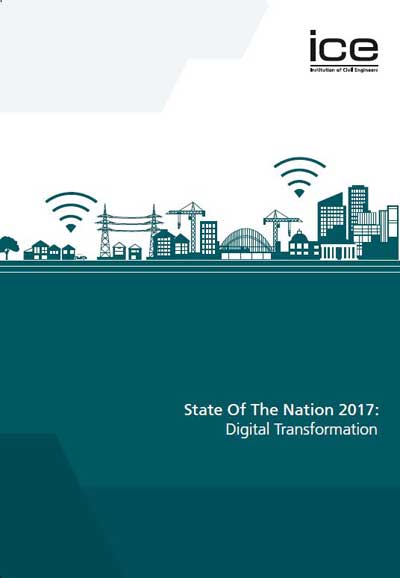For all the talk about the digital construction revolution, what benefits are clients and end users actually seeing on the ground? Is digital construction providing a boost to productivity and economic growth across the UK? If not, what more needs to be done?
 Those are the questions at the heart of the latest report from the Institution of Civil Engineers (ICE), part of its regular State Of The Nation series.
Those are the questions at the heart of the latest report from the Institution of Civil Engineers (ICE), part of its regular State Of The Nation series.
There's no denying that the rise of disruptive new technologies will change not only the shape of the construction industry, but also the built environment itself - but progress in some areas has proved to be slow.
A recent McKinsey index of key sectors ranks construction's digital progress just above Agriculture and Hunting, while a KPMG study last year found that a majority (64%) of firms operating in Europe and the Middle east identified as "industry following" or "behind the curve" when it came to technology.
In the course of charting progress when it comes to using digital technology and data to transform how infrastructure is designed, delivered and operated, the team at ICE have talked to 350 organisations and individuals. The result is not only a snapshot of the journey so far but also a comprehensive look at factors that both enable and block digital change and recommendations for improvement.
Download State of the Nation 2017: Digital Transformation (.pdf, 0.3Mb)
Making the most of the digital construction revolution
Key recommendations from the State Of The Nation 2017: Digital Transformation report include:
Unlocking the productivity potential of digital transformation
- Digital transformation should be at the heart of the infrastructure pillar in government industrial strategy.
- The £23bn National Productivity Investment Fund should be targeted at digital transformation of both construction (digital delivery) and infrastructure (smart infrastructure) to increase capacity and performance of existing assets and networks.
- Regulatory frameworks across all infrastructure sectors should incentivise whole life investment decisions based on the needs of the end user.
Encouraging a step change in organisational culture and leadership in industry
- Professional institutions must work with industry and government to ensure that people at all points in their career have the right skills to adapt.
- Clients, contractors and government should use infrastructure projects, big and small, as incubators for skills and innovation.
- Clients should insist that data is identified, collected, stored and shared in the right way by everyone working on a project as part of the procurement process.
Future proofing our infrastructure networks
- Cyber and physical security considerations must be at the centre of industry thinking in order to keep up with evolving security threats.
- As infrastructure decisions are increasingly made at local level investment should be made in improving the quality of local asset data. This well help improve understanding of the interdependencies between different assets and how that changes with increased connectivity.
- The National Infrastructure Commission should set out a needs-based strategy to align energy and digital infrastructure policy.


